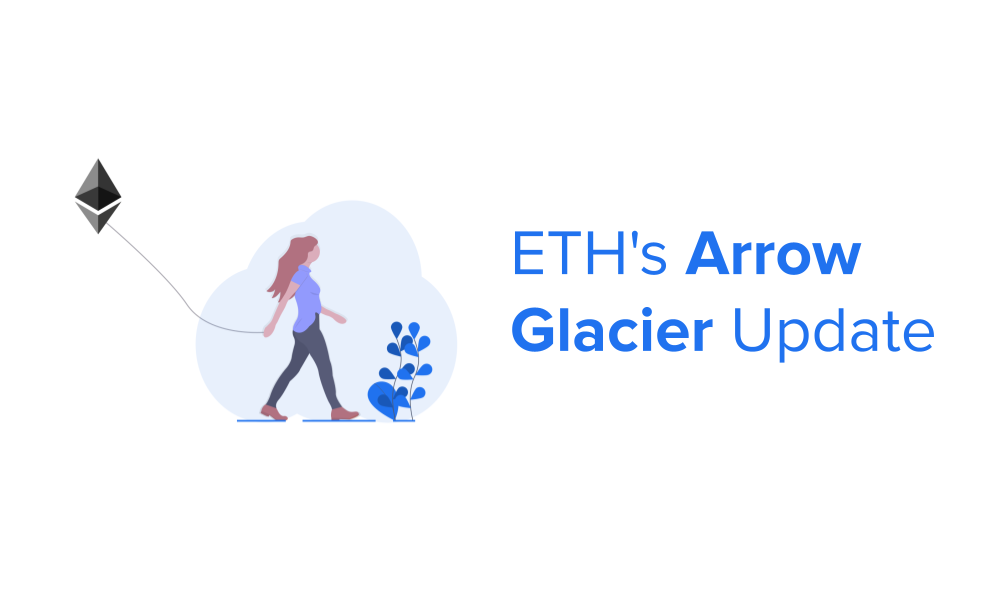Ethereum has officially begun the completion of its transition to the Proof-of-Stake system. This week, the network will be undergoing a scheduled upgrade at block number 13,773,000. The exact date, although predicted to occur on Wednesday, is subject to change given the different block times and timezones.
What is Arrow Glacier?
Arrow Glacier is the 3rd network upgrade planned for the proof of work chain of the Ethereum Network in 2021. Earlier this year, the Ethereum mainnet successfully deployed the Berlin upgrade in April and the London upgrade in August.
The upgrade will bring exactly one fundamental change to how the Ethereum network operates – pushing back the ‘difficulty bomb’ to June 2022. Pushing this back will prevent the blockchain from entering the ice age, a point at which the network stops working.
Wait, Difficulty Bomb? What’s that?
The difficulty bomb is a set of codes implemented in the Ethereum blockchain’s Proof of Work protocol. These codes make it exponentially more difficult for miners to process transactions on the blockchain. Given that Ethereum can only process 15 TPS today, making mining even more difficult will bring the entire network to a standstill.
The bomb is a steep exponential curve; it is flat for a very long time, and quickly takes effect when the bomb “explodes”.
So, why was it added at all?
In short, to help the transition from proof-of-work to proof-of stake in the network. Over time, the difficult bomb has also been positioned as an incentive for miners running Ethereum to keep their nodes upgraded. Don’t want to overburden your hardware? Staying on the old chain is not an option.
You can read more about the history of the difficult bomb here.
I hold ETH. How does this affect me?
If all you’re doing is holding ETH, don’t worry. Take a deep breath and keep HODL-ing!
However, if you are running a node or mining ETH as well, download the latest version of your Ethereum client.

